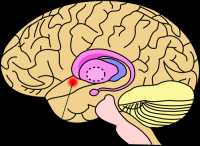Author Interviews, Environmental Risks, Infections, PNAS / 14.03.2024
Rapid Rise in Legionnaires’ Disease Infections As Air Pollution Decreases
MedicalResearch.com Interview with:
Dr. Fangqun Yu PhD
Senior Research Faculty
Atmospheric Sciences Research Center University
Albany, State University of New York
https://www.albany.edu/~yfq
Dr. Arshad Arjunan Nair PhD
Postdoctoral Associate
Atmospheric Sciences Research Center
University at Albany, State University of New York
https://www.albany.edu/~an688965
MedicalResearch.com: What is the background for this study? What are the main findings?
Dr. Fangqun Yu: Legionnaires’ disease is a severe form of pneumonia with a fatality rate of 10-25% caused by inhaling or aspirating Legionella, bacteria that thrive in built environment water systems. Those most vulnerable to this disease are male, over 50 years of age, have a history of smoking, have chronic respiratory diseases, diabetes, are immunocompromised, and/or minorities. The US observed a nearly nine-fold increase in Legionnaires’ disease between 2000 and 2018, with New York State having one of the highest increases in disease rates. The reasons for the increase in incidence were unclear prior to this study.
In our study, we found:
(1) Declining sulfur dioxide concentrations (SO2) are strongly correlated with the increase in legionellosis cases and a physical mechanism explaining this link is proposed,
(2) A geostatistical epidemiological analysis links the disease with exposure to cooling towers, and
(3) Climate and weather are ruled out as factors responsible for the long-term increase in case numbers (outside of seasonal trends).
(more…)



 Response: We were broadly interested in discovering instances of bacterial genes that have been acquired by diverse animal genomes over millions of years of evolution by the process of horizontal gene transfer (HGT). Since these events are quite rare and most previous discoveries have been serendipitous, we developed computational methods to identify genes acquired by HGT in animals. One of the exciting discoveries from our work was that vertebrate IRBP appeared to have originated in bacteria and is now a critical component of the vertebrate visual cycle, so this paper focuses on that one discovery.
IRBP or interphotoreceptor retinoid binding protein is an important protein present in the space between two major cell types in our eyes, photoreceptor cells and RPE cells. Our ability to see involves an intricate set of steps where light is first sensed by causing a change (isomerization) in the chemical structure of molecules in the eye called retinoids. This sensing of light occurs in our photoreceptor cells. Following this change in the chemical structure, the retinoid needs to be recycled back to the chemical structure that can again sense light. This recycling occurs in RPE cells. IRBP performs the essential function of shuttling retinoids between the photoreceptors and the RPE cells, which allows the cycle of sensing and regeneration to work. Supporting its importance, mutations in IRBP (also known as retinol binding protein 3 or RBP3) can cause several severe human eye diseases.
Response: We were broadly interested in discovering instances of bacterial genes that have been acquired by diverse animal genomes over millions of years of evolution by the process of horizontal gene transfer (HGT). Since these events are quite rare and most previous discoveries have been serendipitous, we developed computational methods to identify genes acquired by HGT in animals. One of the exciting discoveries from our work was that vertebrate IRBP appeared to have originated in bacteria and is now a critical component of the vertebrate visual cycle, so this paper focuses on that one discovery.
IRBP or interphotoreceptor retinoid binding protein is an important protein present in the space between two major cell types in our eyes, photoreceptor cells and RPE cells. Our ability to see involves an intricate set of steps where light is first sensed by causing a change (isomerization) in the chemical structure of molecules in the eye called retinoids. This sensing of light occurs in our photoreceptor cells. Following this change in the chemical structure, the retinoid needs to be recycled back to the chemical structure that can again sense light. This recycling occurs in RPE cells. IRBP performs the essential function of shuttling retinoids between the photoreceptors and the RPE cells, which allows the cycle of sensing and regeneration to work. Supporting its importance, mutations in IRBP (also known as retinol binding protein 3 or RBP3) can cause several severe human eye diseases.














